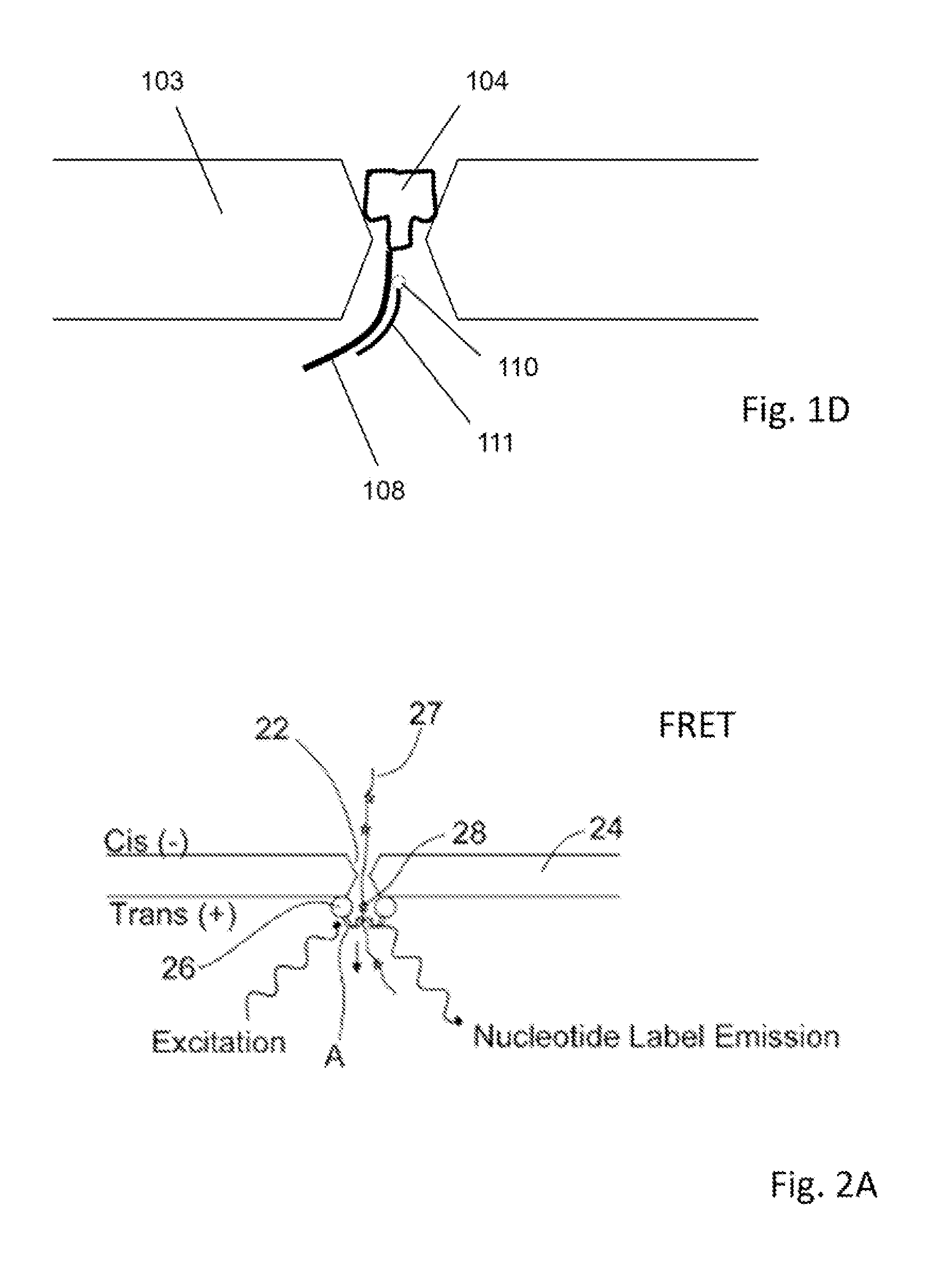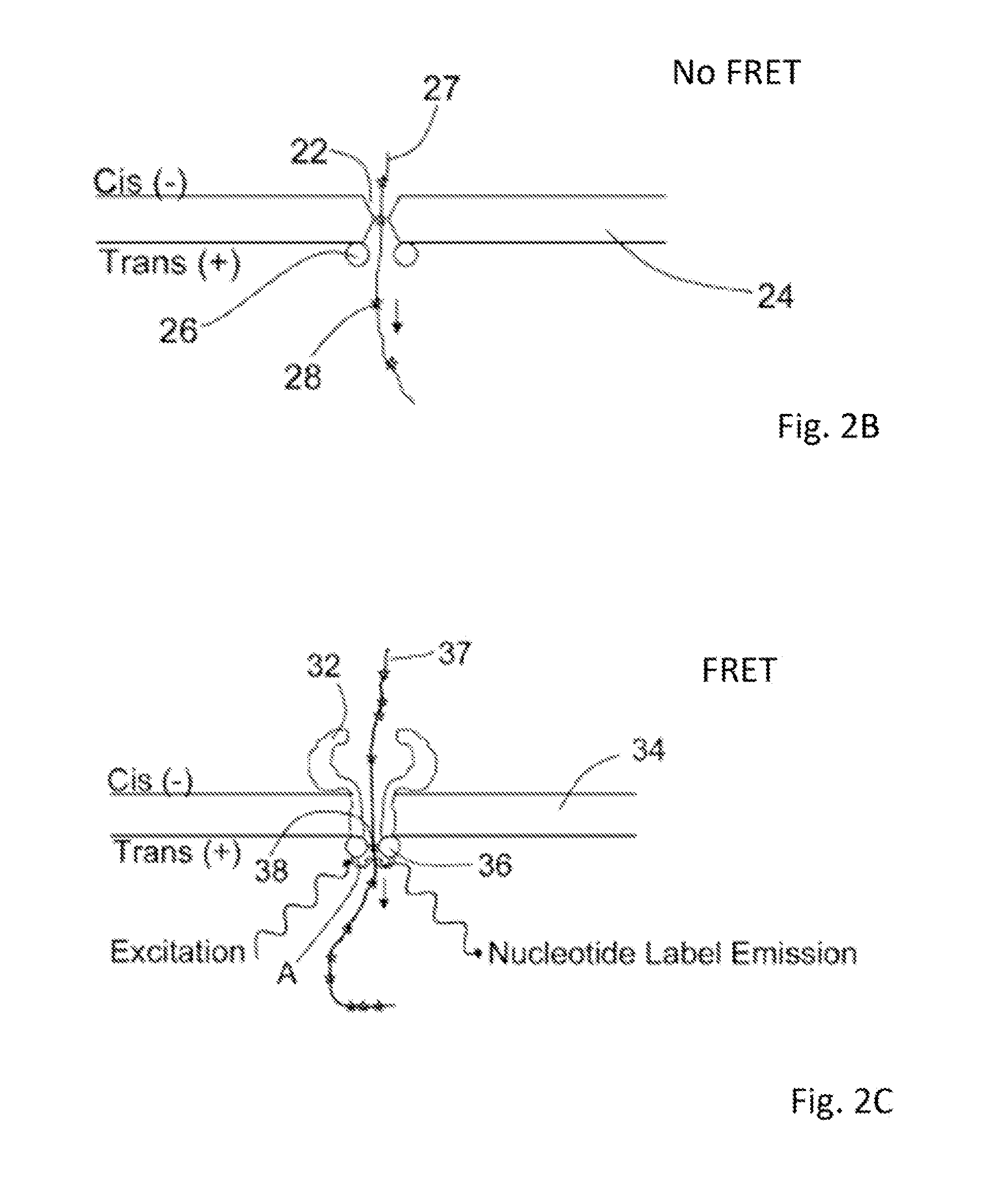Hybrid nanopore device with optical detection and methods of using same
a nanopore and hybrid technology, applied in specific use bioreactors/fermenters, biomass after-treatment, biochemical apparatus and processes, etc., can solve the problems of unstable and difficult work of protein nanopores embedded in lipid bilayers, difficult single-base discrimination, and unstable solid-phase membranes with nanopores, etc., to achieve stable placement of a member
- Summary
- Abstract
- Description
- Claims
- Application Information
AI Technical Summary
Benefits of technology
Problems solved by technology
Method used
Image
Examples
Embodiment Construction
[0020]Methods and systems for generating stable and precise nanopores are provided. A solid state nanopore is a small hole, typically with a diameter of 1-50 nm drilled into a thin substrate such as con nitride (Si3N4), silicon oxide (SiO2), aluminum oxide (Al2O3) or graphene. The solid-state approach of generating nanopores offers robustness and durability as well as the ability to tune the size and shape of the nanopore, the ability to fabricate high-density arrays of nanopores on a wafer scale, superior mechanical, chemical and thermal characteristics compared with lipid-based systems, and the possibility of integrating with electronic or optical readout techniques. Biological nanopores on the other hand show art atomic level of precision that cannot yet be replicated by the semiconductor industry. In addition, established genetic techniques (notably site-directed mutagenesis) can be used to tailor the physical and chemical properties of the biological nanopore. However, each sys...
PUM
| Property | Measurement | Unit |
|---|---|---|
| diameter | aaaaa | aaaaa |
| diameter | aaaaa | aaaaa |
| size | aaaaa | aaaaa |
Abstract
Description
Claims
Application Information
 Login to View More
Login to View More - R&D
- Intellectual Property
- Life Sciences
- Materials
- Tech Scout
- Unparalleled Data Quality
- Higher Quality Content
- 60% Fewer Hallucinations
Browse by: Latest US Patents, China's latest patents, Technical Efficacy Thesaurus, Application Domain, Technology Topic, Popular Technical Reports.
© 2025 PatSnap. All rights reserved.Legal|Privacy policy|Modern Slavery Act Transparency Statement|Sitemap|About US| Contact US: help@patsnap.com



